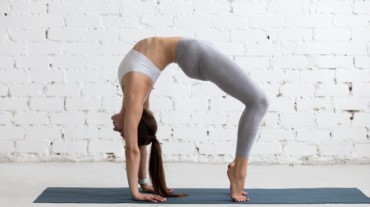
Heya! If you are trying to be a yogini, first of all, kudos for picking yoga. But also, all the very best, because it’s a tricky terrain to walk on. Why, you may ask? Well, that’s because yoga needs a lot of practice to ace. And if you are a beginner, then you need to take care of a lot of things. You need to know the flow, posture, move, hold, timing — all in all, there’s a whole lot of work that goes when it comes to yoga. Having said that, all this hard work definitely shows results, when you get into the groove.
That’s why, today, we are going to welcome you into the yogic world, but with a statutory warning of the yoga poses you should definitely remove from your list, as a beginner.
According to Grand Master Akshar, as a beginner, it is always better to start slow. Gradually build your practice over a period of time, staying focused on a regular and consistent practice. Yoga inculcates the habit of discipline and instils inclination towards self-care.
“Start with sukshma vyayam or subtle exercises. These consist of gentle rotations of the neck, arms, wrists, hips, ankles to slowly warm up the joints. Walk around briskly, and stretch and mobilize your muscles. This will prepare your body for a practice, and keep you safe from practice-related injuries,” said Grand Master Akshar.

Here are seven yoga poses that you must avoid doing as a beginner, and instead go for the alternate asanas:
Padmasana puts a great deal of stress on the knee and ankle joints, and is not advisable for a beginner to practice. Sukhasana helps to open the hips, and can be used as a preparation for padmasana.
Supta vajrasana can be a demanding posture for the back, knees and ankle joints, and is not advisable for a beginner to practice. You can start with vajrasana, which helps to stretch the front of the legs, and can be used as a preparation for supta vajrasana.
Chaturanga is an advanced pose which requires a lot of upper body strength – arms, shoulders and wrists. You can start with santolanasana, which helps to strengthen the core and the upper body, and can be used as a preparation for chaturanga dandasana.
While paschimottanasana is a relatively simple pose, if you have tight hamstrings or a stiff lower back, you can start with dandasana. This posture is a modification which helps to strengthen and stretch the hamstrings and lower back, and can be used as a preparation for paschimottanasana.
Chakrasana is a back-bending pose which is not advisable for beginners to attempt. You can use this basic variation of bridge pose, before you practice the wheel pose. Setu bandha sarvangasana helps to open up the back and strengthen the lower body.

Sarvangasana or shoulder stand has many benefits, but is an intermediate to advanced level posture. It can put a tremendous amount of pressure on the neck and needs a great amount of core and shoulder strength. To prepare for the shoulder stand, you can start with a halasana or plough pose.
Sirsasana or headstand is an advanced level pose which requires the practitioner to bear the weight of the body on his head. Until sufficient strength is built, it is advisable to practice halasana which gives all the same benefits of a headstand and is easier to perform.
“Avoid intense vinyasa flows and instead practice the Himalaya pranam. Himalaya pranam consists of 11 steps, and helps the practitioners in multiple ways. It is a simple sequence of asanas that makes the body agile and dynamic. Yoga places no restrictions on age, body size etc. This holistic practice is truly meant for all, and can be started at any age whether five years or 50 years. Yoga is a highly customizable practice and can be fast, slow or medium depending on your level of comfort. However, it is important to remain aware of the signals that your body gives out, as this will determine your progress,” concludes yoga expert, Grand Master Akshar.
So ladies, if you want to go a long way in yoga, then most certainly you should avoid doing any of the above yoga poses, initially.
Get Latest Updates on Fitness, Muscle Gain, Staying Fit, Weight Loss